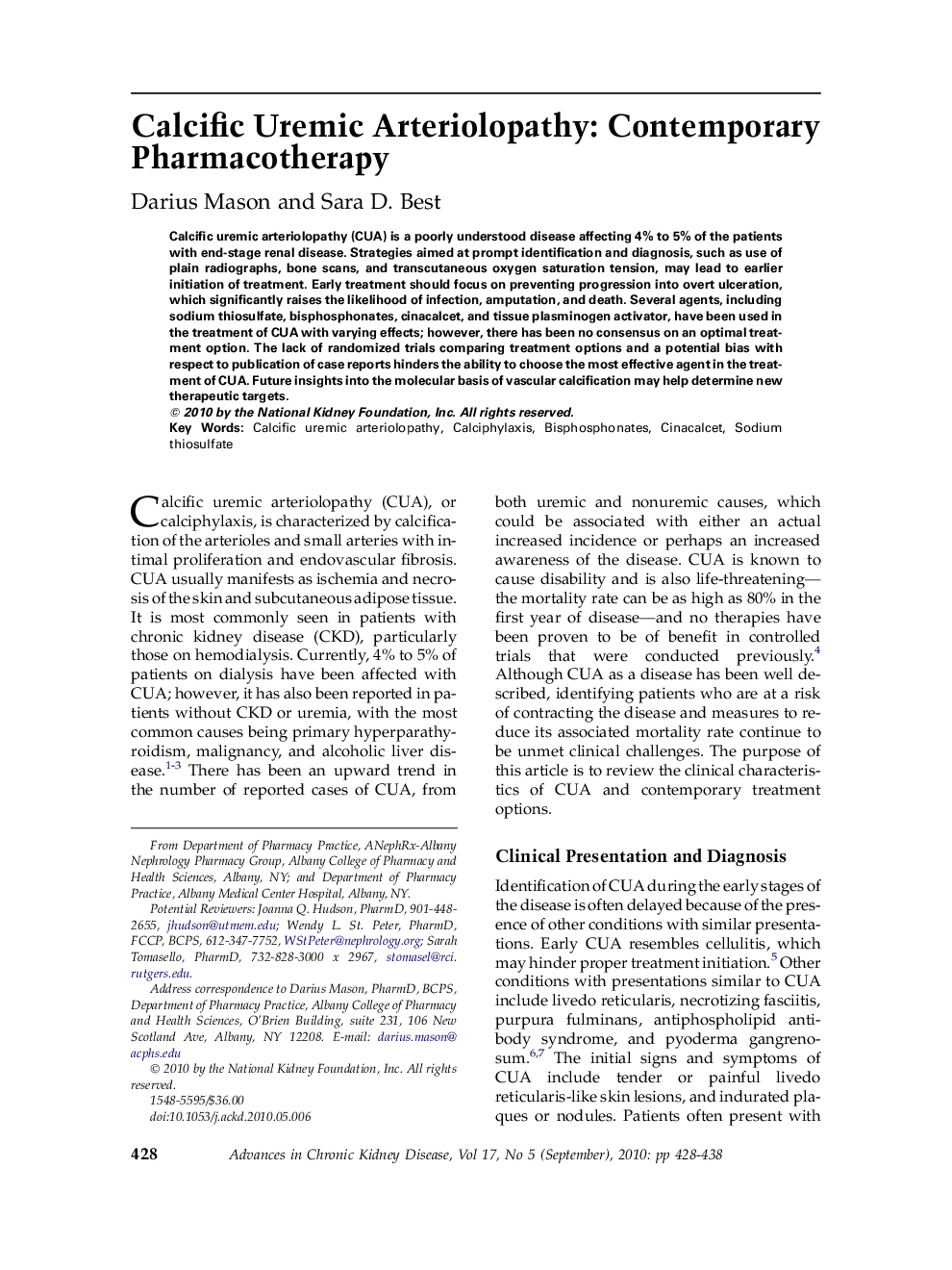| Article ID | Journal | Published Year | Pages | File Type |
|---|---|---|---|---|
| 3847144 | Advances in Chronic Kidney Disease | 2010 | 11 Pages |
Abstract
Calcific uremic arteriolopathy (CUA) is a poorly understood disease affecting 4% to 5% of the patients with end-stage renal disease. Strategies aimed at prompt identification and diagnosis, such as use of plain radiographs, bone scans, and transcutaneous oxygen saturation tension, may lead to earlier initiation of treatment. Early treatment should focus on preventing progression into overt ulceration, which significantly raises the likelihood of infection, amputation, and death. Several agents, including sodium thiosulfate, bisphosphonates, cinacalcet, and tissue plasminogen activator, have been used in the treatment of CUA with varying effects; however, there has been no consensus on an optimal treatment option. The lack of randomized trials comparing treatment options and a potential bias with respect to publication of case reports hinders the ability to choose the most effective agent in the treatment of CUA. Future insights into the molecular basis of vascular calcification may help determine new therapeutic targets.
Related Topics
Health Sciences
Medicine and Dentistry
Nephrology
Authors
Darius Mason, Sara D. Best,
